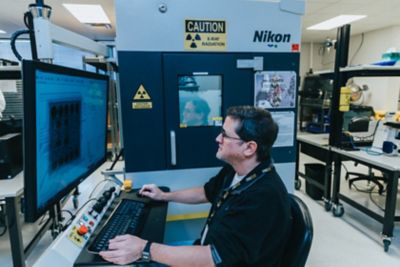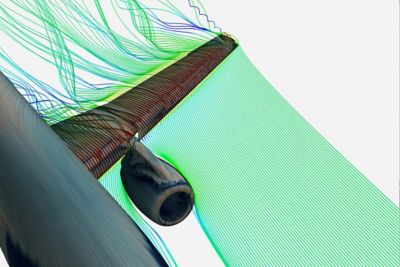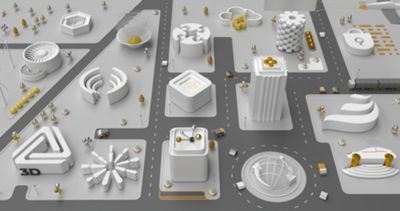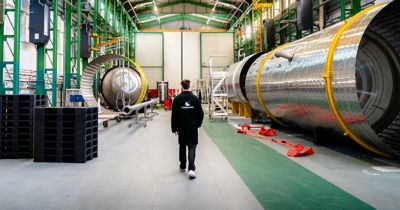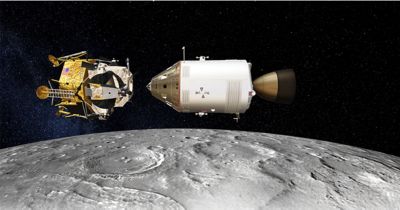-
United States -
United Kingdom -
India -
France -
Deutschland -
Italia -
日本 -
대한민국 -
中国 -
台灣
-
Ansys is committed to setting today's students up for success, by providing free simulation engineering software to students.
-
Ansys is committed to setting today's students up for success, by providing free simulation engineering software to students.
-
Ansys is committed to setting today's students up for success, by providing free simulation engineering software to students.
-
Contact Us -
Careers -
Students and Academic -
For United States and Canada
+1 844.462.6797

The Ansys Digital Mission Engineering collection introduces several notable updates and enhancements for 2025 R1, empowering you to tackle a range of mission design challenges.
As the proliferation of large satellite constellations continues to accelerate, the need for tools that enable rapid performance assessment of potential configurations is grows. While the choices of how data can be optimally moved through a constellation may vary, certain basic methodologies provide valuable first-pass evaluations. To that end, Ansys Systems Tool Kit (STK) 2025 R1 has added an “Optimal Strand by Duration” option that enables you to obtain quick insights into any constellation configuration.
For radar designers and operators, it is not often easy or intuitive to assess the performance of a given radar configuration against a specific designated target. To aid in that task, Ansys RF Channel Modeler 2025 R1 has multiple new tools to simplify this effort. Its direct access to raw radar images provides near-instantaneous performance feedback for any tracking scenario.
Additional enhancements to the workflows enable users to benefit from STK software’s native 3D visualization layer by aligning and displaying resulting radar outputs as an overlay on top of the input 3D model. Users of phased array antennas will frequently require those antennas to simultaneously track multiple objects using built-in rules for deciding how many and which targets warrant a dedicated beam. Users will now have the ability to construct a set of rules without requiring a scripting solution.
Continued planned exploitation of the cislunar region of space has spurred the need for new capabilities to safely operate spacecraft around the Earth-Moon L1 and L2 Lagrange points. The same concerns that exist in geocentric space, such as maneuver planning, collision avoidance, and contact scheduling, all exist in cislunar space. The consequences of failures in these regions can be far costlier to recover from. In response, Ansys Orbit Determination Tool Kit (ODTK) 2025 R1 will now include the cislunar initial orbit determination (IOD) functionality designed specifically for vehicles operating in this multibody gravitational environment.
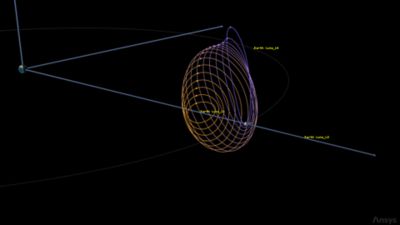
ODTK software will now also include a mass estimation capability, which provides the critical ability to estimate fuel usage during the performance of any maneuver, as well as estimating remaining fuel mass postmaneuver. The ability to manage fuel usage is paramount when planning the operational lifetime of any spacecraft.
Last but certainly not least, the value of model-based systems engineering (MBSE) can’t be overstated in the overall engineering life cycle. This latest STK release has enhanced user interactions with the Behavior Execution Engine by enabling better window management, configuration discoverability, and control over running simulations, especially those containing breakpoints. These key updates to 2025 R1 enhance the capabilities across mission design and analysis, radio frequency (RF) modeling, and systems engineering integration to better support the growing complexity and scope of modern aerospace system development.
Optimal Strand by Duration in STK Software
- A new capability is now available in the Chains tool in STK software, enabling users to compute optimal strands based on a new metric called “Duration.” By providing a viable and cost-effective mechanism to address communication with switching transmitters and receiver links, users will be better able to understand the cost of moving information through a network.
- Specifically, you will be able to qualify each path through a constellation based on a metric that loosely represents the accumulated data processing effort across individual nodes in a complete strand.
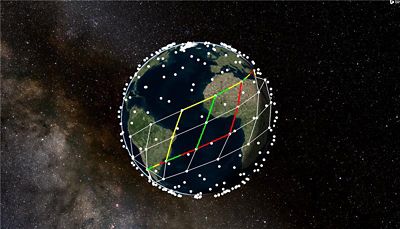
- By maintaining individual links for as long as possible, you can make comparisons with other optimal routing techniques — for example, shortest distance — when performing cost-benefit analyses.
- By choosing to minimize the Duration metric, you can identify the most expensive cases. In this case, the shortest duration links will always be chosen, resulting in the maximum number of switches.
- This new feature will help anyone designing a constellation or network consisting of many nodes and therefore many potential paths into and out of the network.
RF Channel Modeler Video and Data Products
- Video and data products in RF Channel Modeler software directly support data analysts by offering automated data presentations and image alignment. They enable you to present radar image data on a visualization plane in the STK scenario.
- Using the same scenario used to build the input data for Ansys Perceive EM software embedded in RF Channel Modeler software, the generated Perceive EM radar image is available in the STK scenario for data analysis. This enables analysts to exploit the radar image and understand scattering phenomena associated with the collection scenario.
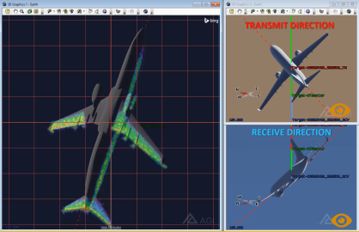
- In addition, a number of new features are available. These include data manipulation streamlining as settings change, automated image stretching in range and cross range to help align image overlay with respect to the physical STK model, bistatic collection scenarios, and truncated low signal returns to unclutter image data.
Cislunar Initial Orbit Determination
- A new Collocation object has been added to ODTK software that is specifically designed to estimate multibody orbits. IOD is specialized for estimating cislunar orbits for the Earth-Moon L1 and L2 Lagrange points.
- This feature provides the previously unavailable capability to perform an IOD for space objects in certain regions of cislunar space.
- ODTK users trying to do uncooperative tracking of a space object in an orbit about Earth-Moon L1 or L2 will benefit from having this new feature at their fingertips.
- Off-nominal occurrences may cause space operators to lose track of a spacecraft in these regions. Taking advantage of this new feature will simplify the process of reacquiring a lost vehicle.
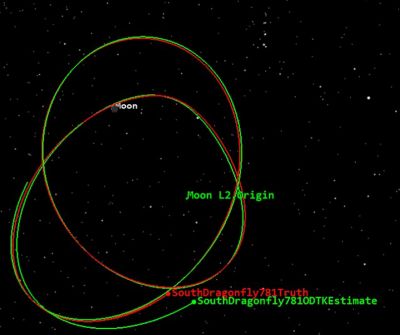
Digital mission engineering software enables organizations to validate complex system performance, which significantly reduces risk, cuts development costs, and accelerates time to market while ensuring system reliability and performance. Particularly valuable for aerospace, defense, and space applications in which physical testing is extremely expensive or impractical, users can assess system performance against mission requirements. The updates and enhancements to 2025 R1 provide capabilities across mission design and analysis, RF modeling, and systems engineering integration.
Supporting users with the growing complexity and scope of modern aerospace system development, the improvements enable more robust and reliable solutions while avoiding costly design changes or mission failures.
Learn more about the Digital Mission Engineering product collection.
The Advantage Blog
The Ansys Advantage blog, featuring contributions from Ansys and other technology experts, keeps you updated on how Ansys simulation is powering innovation that drives human advancement.







